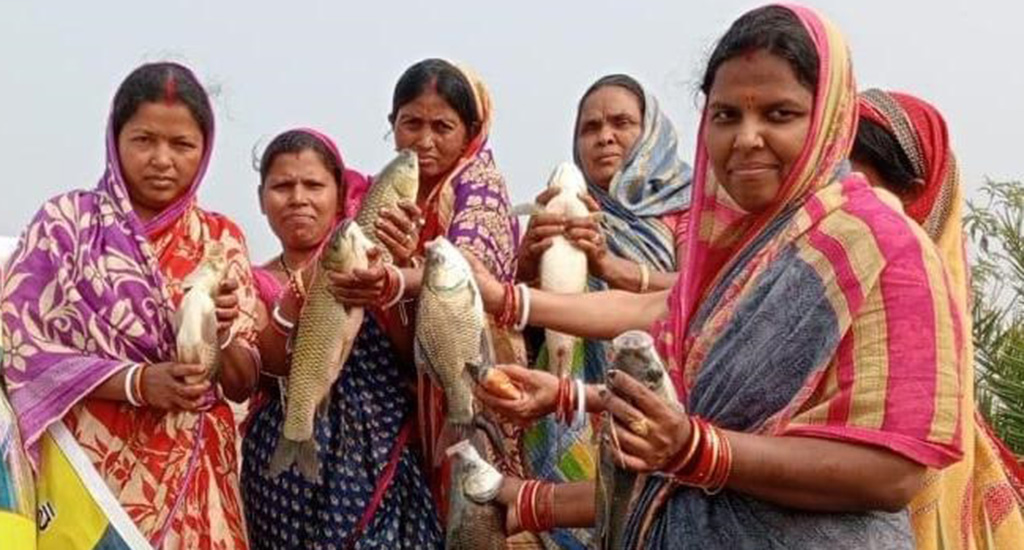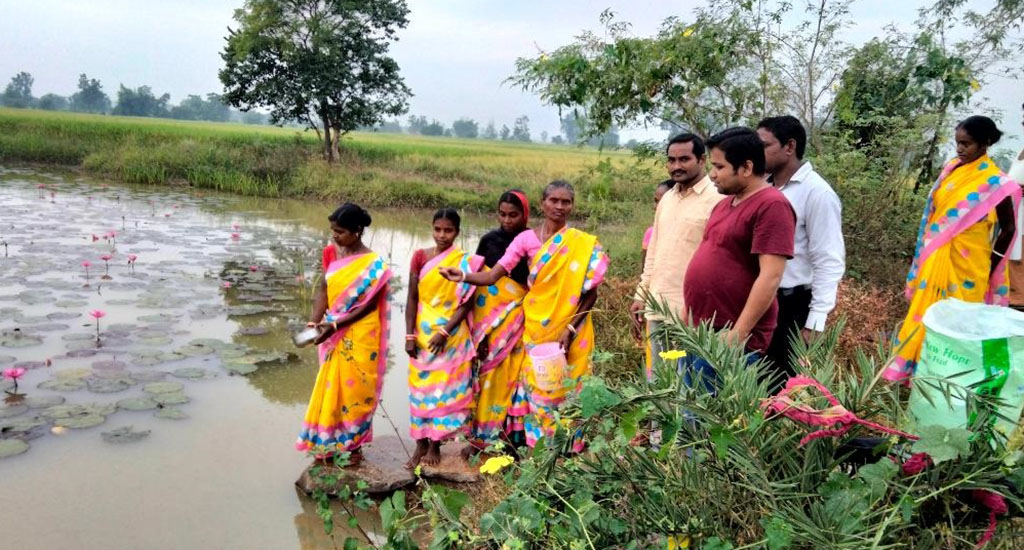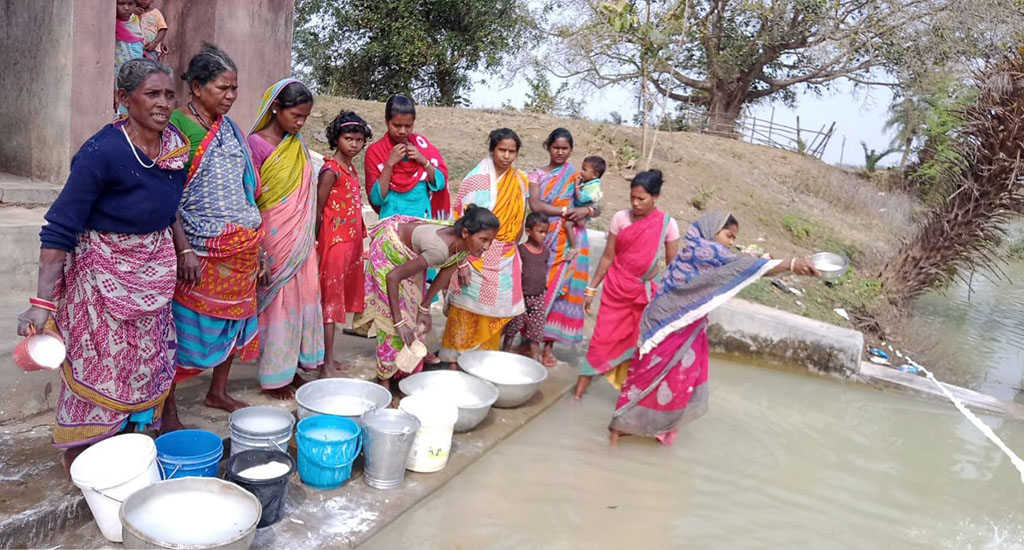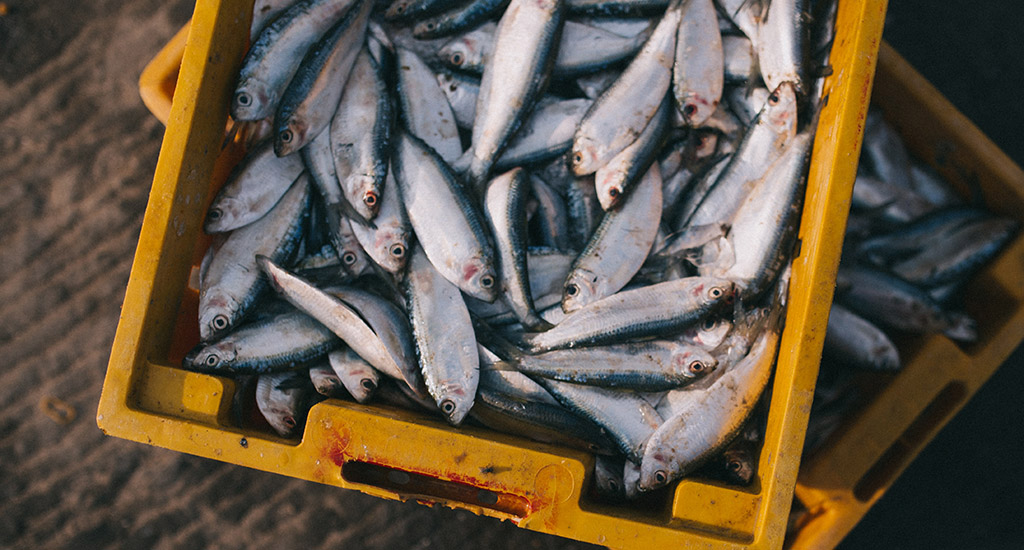
Fish on their plate, money in their wallet
In underdeveloped Mayurbhanj, Odisha, women sustainably cultivate fish that not only brings them money but ensures better nutrition for their family.

In underdeveloped Mayurbhanj, Odisha, women sustainably cultivate fish that not only brings them money but ensures better nutrition for their family.
Here’s a story about community-based aquaculture, its economic benefits in rural Odisha, and the heroic women behind it.
For millions of Indians the pandemic not only meant job losses, it also meant loss of sustenance. Especially for those living hand-to-mouth in rural areas.
“When we earn less, we eat less. So our children eat fewer varieties of vegetables and less meat,” said Salama Soren of Kadpalasa village.
Even before the pandemic hit, the situation of marginalised communities in Odisha’s Mayurbhanj district was not promising. According to the NITI Aayog’s National Multidimensional Poverty Index 2021 report, nearly 45% of people are classified as “multidimensionally poor” in Mayurbhanj.
The pandemic has worsened their situation.
Against such odds, women self-help groups in the Mayurbhanj district’s Khunta administrative block are cultivating fish in their village ponds. This community-based aquaculture not only brings them income, but also nutrition.
This is a timely success story as the United Nations has designated 2022 as the International Year of Artisanal Fisheries and Aquaculture.
With the support of Odisha Livelihood Mission (OLM) and Mission Shakti – a women’s empowerment initiative – self-help groups (SHGs) for women now practise community-based aquaculture. The programme is a sustainable and viable livelihood model resilient to a changing climate.

Each SHG has around 10 members, most of whom are single women. A majority of them are from the Santal, Munda, Bhumija and Ho tribes.
“These are designated as high-risk households,” said Harapriya Patra, the child development programme officer for Khunta. “Ensuring income and nutrition is imperative.”
The OLM provided fish eggs, organic floating feed and mustard-cake fish feed.
The women were also extensively trained by Odisha’s Fisheries & Animal Resources Development Department.
In the training sessions the women learned how to rear fish as well as how to use crop residue and even kitchen waste in the pond.
“Basically, we teach them to use locally available low-cost inputs. This will enhance natural food for fish,” Prakash Giri, a fisheries department official, told Village Square.
The women also learned how to use rice and peanut powder, which have all the nutrients essential for fish survival.
“Now we know the benefits of natural food,” said Pravati Marandi of Bahanada Federation, which is a group of SHGs. “Now fish in our pond are growing faster and healthier.”
(ALSO READ: Rearing fish in farm ponds boosts rural incomes)
Even after training, the fisheries department continues to guide and support the women as keeping a healthy pond is a delicate balance.

The women are taught about other sustainable practices too from avoiding chemical antibiotics to inappropriate feed application, as cultivating too many fish too quickly can be detrimental.
“If we don’t sensitise them about the evils of intensive aquaculture, it could generate detrimental waste. And that would threaten the aquatic biodiversity,” said Ajay Kumar Nayak, an official at OLM.
Since indigenous fish thrive best, the women cultivate local fish. The varieties they rear include rohu, catla and carp.
“Native species perform better,” said Srinibas Das, an official at OLM. “They are resilient to local ecosystem and fetch a higher price as people prefer its taste over the exotic varieties.”
Many of the SHG women are motivated by the success of selling their fish, which is in high demand.
Last year, the Baba Balunkeswar SHG harvested around 10 quintals, earning a net profit of Rs 75,000.
“We deposited Rs 50,000 in our SHG bank account and distributed Rs 25,000 equally among our members,” said Sasmita Patra, president of the Baba Balunkeswar SHG.

They have taken a bank loan of Rs 2 lakh to expand their fish business and expect to harvest around 25 quintals of fish.
As they earn more, the women are able to spend their profits improving the health and education of their families.
“People prefer our fish and pay a good price. With good earnings, we’re able to spend more on our children’s health and education,” said Sarojini Hansdah from the Immanuel SHG.
As the price of food is soaring, the women are also able to use a part of their income to grow their own vegetables. Some grow up to 18 varieties of vegetables in their backyards
“Now children, pregnant women and lactating mothers consume diversified nutritious food,” said Srinibasa Das, the OLM official.
That is not all. The women also sell the surplus vegetables in the local market, thus earning additional income.
Some members have been able to buy goats and chickens too, which provides milk, meat and eggs for their family.
As Manas Ranjan Samal, the block development officer of Khunta, says the low-cost eco-friendly aquaculture model reboots rural economies and reduces people’s vulnerability.
“Since the community-based aquaculture fosters community ownership, it will help improve micro-nutrition deficiency, per capita income and reduce maternal and infant mortality in rural areas,” said Samal.
Abhijit Mohanty is a freelance journalist based at Bhubaneswar.